Originating in Mexican folk Catholicism, Nuestra Señora de la Santa Muerte is a female deity and spiritual icon said to be a personification of death.
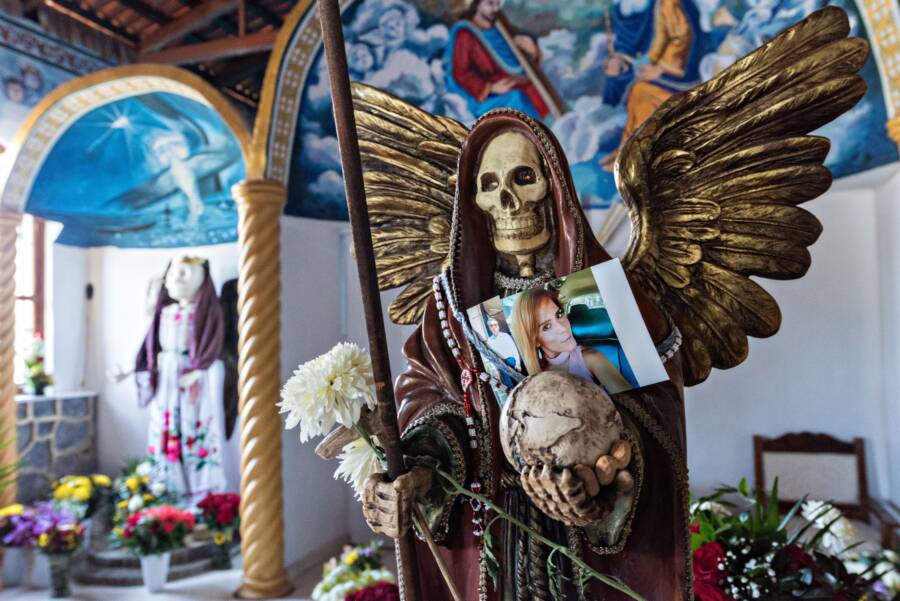
Richard Ellis/Alamy Stock PhotoFollowers of Santa Muerte have grown in recent years, driven by social media, immigration, and some people’s exasperation with the Catholic Church.
Santa Muerte is a saint like no other. Her worshippers bring her tokens like tequila, beer, and cigarettes. She has a large following among drug traffickers and sex workers. And the Catholic Church adamantly refuses to acknowledge that she’s a saint at all. So who is Nuestra Señora de la Santa Muerte, or Our Lady of Holy Death, and why is she so controversial?
For some people who feel forgotten, rejected, or shunned, she’s their folk saint of choice. Santa Muerte accepts everyone. Like death, she doesn’t discriminate, no matter who someone is or what they’ve done in their life.
And though Santa Muerte’s origins in Mexican folk Catholicism date back to Spanish colonial times, her skyrocketing popularity is something new. More than 10 million people in Mexico — and beyond — have started to worship the “Bony Lady” since 2001, much to the chagrin of the Vatican.
The Saint’s Spanish And Indigenous Origins
Santa Muerte emerged out of Spanish and Indigenous Mexican ideas about death. The Aztecs had long worshipped a death goddess called Mictecacihuatl. Maya people also had their own death gods that they believed in. So when the Spanish arrived in modern-day Mexico with their ideas about the Grim Reaper, Indigenous people combined that concept and their existing deities to create the hybrid figure Santa Muerte, or Holy Death.
“They took something foreign but familiar and made her holy,” said Andrew Chesnut, the Bishop Sullivan Chair of Catholic Studies at Virginia Commonwealth University and the author of the book Devoted to Death: Santa Muerte, the Skeleton Saint, in an interview with NBC News.
That said, Santa Muerte remained in obscurity for years. Those who worshipped her did so secretly, though NBC News reports that she enjoyed a small surge of popularity between the 1940s and 1980s among women who practiced “love magic” and thought their partners were being unfaithful.
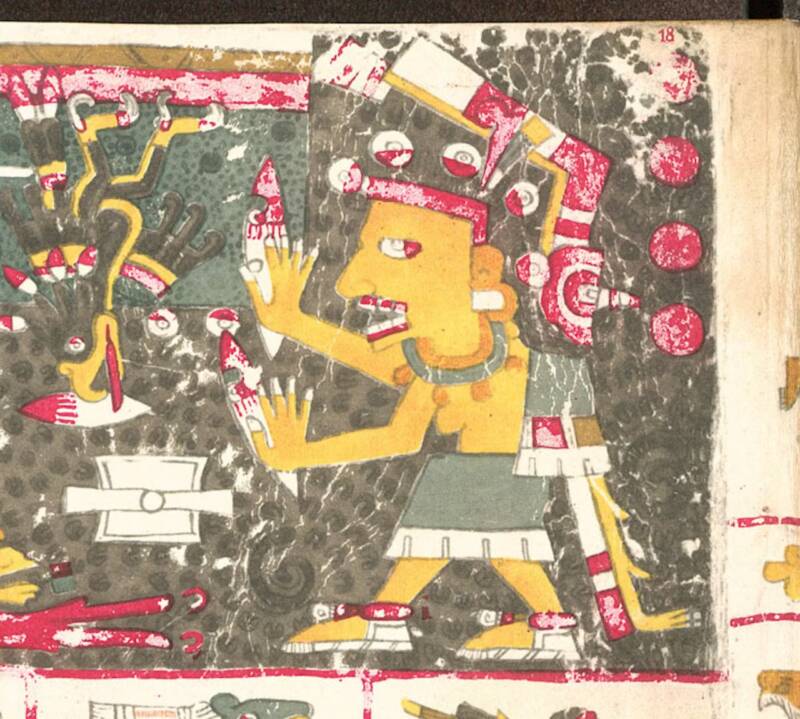
Public DomainMictecacihuatl, the Aztec “Lady of the Dead.”
Then, in 2001, interest in Santa Muerte suddenly skyrocketed when a temple leader created a public shrine to her in Mexico City. Soon afterward, the imminent Mexican Drug War, the rising popularity of social media, increasing immigration, and even TV shows like Breaking Bad helped spread the “Death Saint” in popular culture. Today, an estimated 10 million people celebrate this folk saint in Mexico and beyond, especially during annual celebrations of the Day of the Dead (November 1st and 2nd). Her rise in popularity is stunning.
“She was unknown to 99 percent of Mexicans before 2001, when she went public,” Chesnut explained to the Catholic News Agency. “Now I estimate there’s some 10-12 million devotees, mostly in Mexico, but also significant numbers in the United States and Central America.”
So why have so many people flocked to the cult of Santa Muerte?
Santa Muerte Today
Santa Muerte does not look like a very comforting saint. She’s normally depicted as a bony woman wrapped in a shawl and carrying a scythe. “She’s basically the poster girl of narco-satanic spirituality,” Chesnut said, noting that she’s especially popular with members of drug cartels.
Yet millions of other kinds of people have flocked to her side in recent years.
As Chesnut told NPR: “She is the saint who never discriminates, because death accepts everybody. We all end up in her bony embrace.”
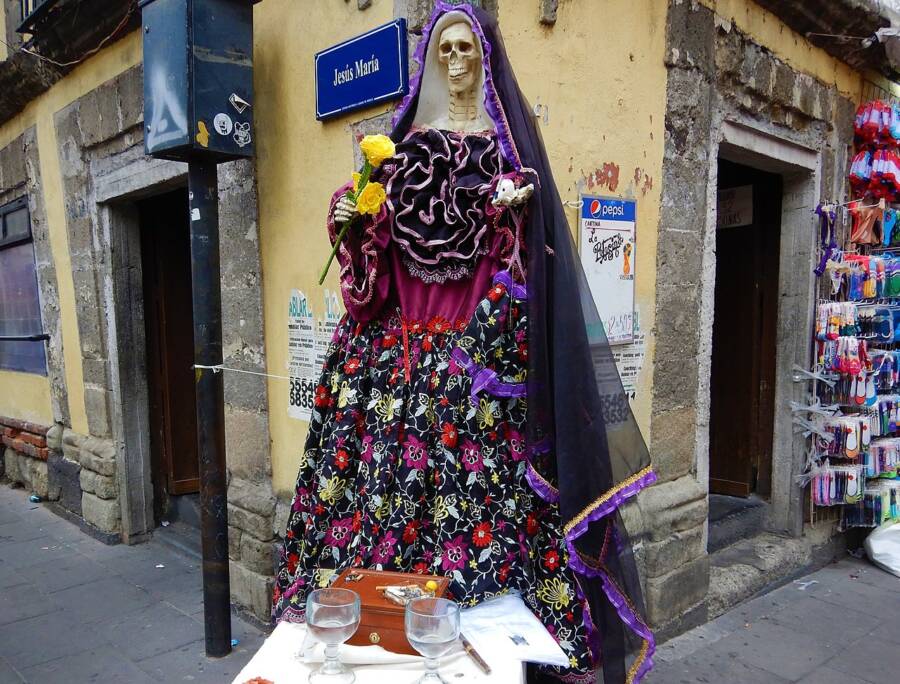
Jmillan325/Wikimedia CommonsA monument to Santa Muerte, with what appear to be offerings of cigarettes and tequila at her feet.
The folk saint’s worshippers mostly include people on the fringes of society, such as drug traffickers, sex workers, and convicts, and people from marginalized groups, such as LGBTQ+ people, migrants, and street children. It’s believed that Santa Muerte is so beloved among these groups of people because she judges neither them nor their requests. That means that worshippers can ask her for things that they might not ask other saints.
Alongside normal prayers for good health, protection, and love, worshippers might ask that a drug shipment gets to its destination on time. They might ask for their enemies to suffer. Essentially, worshippers can ask for whatever they want and Santa Muerte will not think less of them for it.
However, the saint does take promises seriously. If a worshipper makes a promise in exchange for something, they had better deliver — or else.
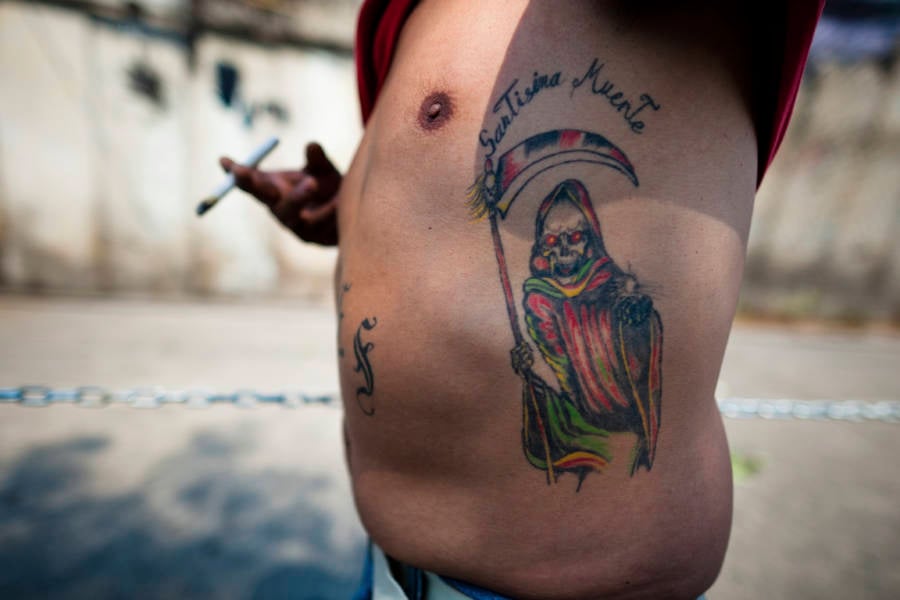
Jan Sochor/Latincontent/Getty ImagesA Mexican follower of Santa Muerte shows his tattoo during a pilgrimage in Tepito, a neighborhood in Mexico City.
“Many rappers ask her to make them famous or to screw people over, but she’s very just and she’ll make them pay,” Mose Quintero, an amateur rapper in Mexico, explained in an interview with the BBC.
Just as the prayers to the folk saint are unorthodox, so are the tokens that people offer her. As the BBC reports, these offerings might include tequila, beer, cigarettes, traditional snacks, and flowers.
But although many of Santa Muerte’s followers are practicing Catholics, the Catholic Church has strenuously denounced the folk saint’s cult on numerous occasions. In 2013, the Vatican even called her “blasphemous.”
Why The Catholic Church Calls Santa Muerte “Blasphemous”
“[The cult of Santa Muerte is] not religion just because it’s dressed up like religion,” said Cardinal Gianfranco Ravasi, the Vatican’s culture minister.
According to the BBC, Ravasi also said that worshipping Santa Muerte or offering her any kind of tokens was “anti-religious.”
“Religion celebrates life, but here you have death,” he said. Noting that the controversial folk saint is especially popular among drug cartels and criminals, Ravasi added, “[I]t’s a blasphemy against religion… The mafia, drug trafficking, and organized crime don’t have a religious aspect and have nothing to do with religion, even if they use the image of Santa Muerte.”
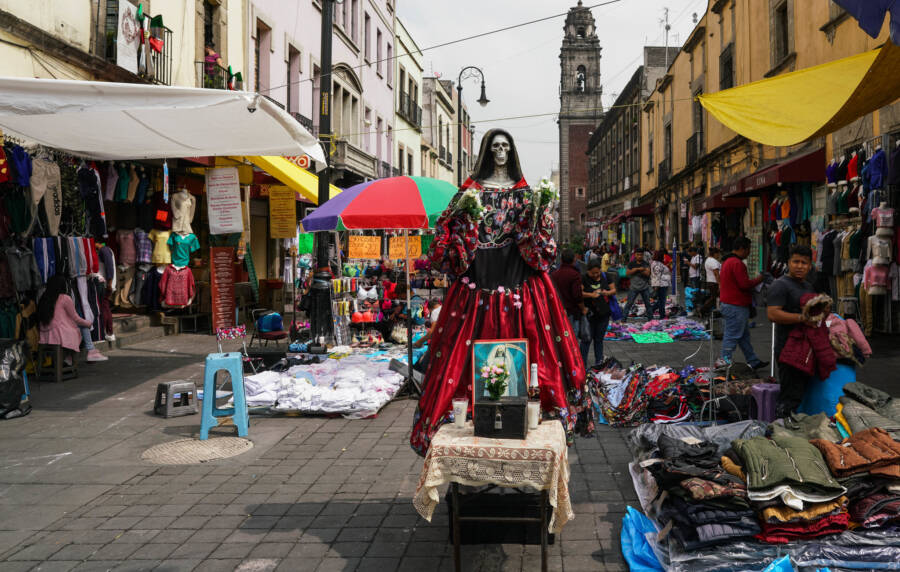
Thomas_H_foto/FlickrSanta Muerte on a street in Mexico. She is celebrated around the same time as the Day of the Dead in early November.
Andres Gutierrez, a pastor at St. Helen parish in Rio Hondo, Texas, agreed. The saint, he told the Catholic News Agency, “is literally a demon with another name.” And Gary Thomas, an exorcist for the Diocese of San Jose, said, “I have had a number of people who have come to me as users of this practice and found themselves tied to a demon or demonic tribe.”
What’s more, NBC News reports that some worshippers of Santa Muerte have taken their devotion to unsettling extremes. The rise of exorcisms in Mexico is thought to be due, in part, to people joining the Santa Muerte cult. And ritual sacrifices have been linked to the cult, including in 2012, when eight people killed a woman and two boys for their blood.
Prosecutors claimed that “they sliced open the victims’ veins and, while they were still alive, they waited for them to bleed to death and collected the blood in a container,” which they then allegedly poured around an idol.
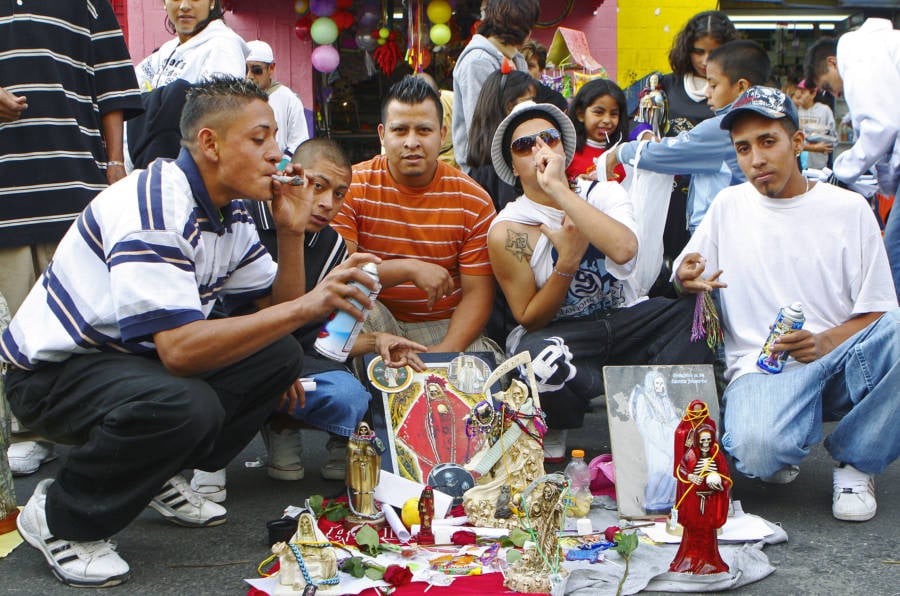
Jam Media/LatinContent/Getty ImagesMen stand next to a makeshift altar honoring Santa Muerte in Tepito in Mexico City on the Day of the Dead in 2009.
“Everyone is needed to put the brakes on this phenomenon, including families, churches and society in its totality,” Ravasi said, according to HuffPost. He added that worshipping the “sinister and infernal” Santa Muerte “is the celebration of devastation and of hell.”
NPR reports that the Catholic Church has warned against including Santa Muerte in Day of the Dead celebrations for the past six or seven years. And the Mexican government has declared the saint an “enemy of the Mexican State.” But this controversial figure doesn’t seem to be going anywhere soon.
“She gives people what they want and when they finish their cycle of life here on earth she comes for their souls,” Daniel Santana, who performs a Mass in honor of the saint, told the BBC: “She’s just fulfilling God’s orders.”
After this look at Santa Muerte, read about the Mexican drug lord Adolfo Constanzo, who sacrificed his victims in the name of the occult. Then, take a look at photos that capture the devastation of the Mexican Drug War.





